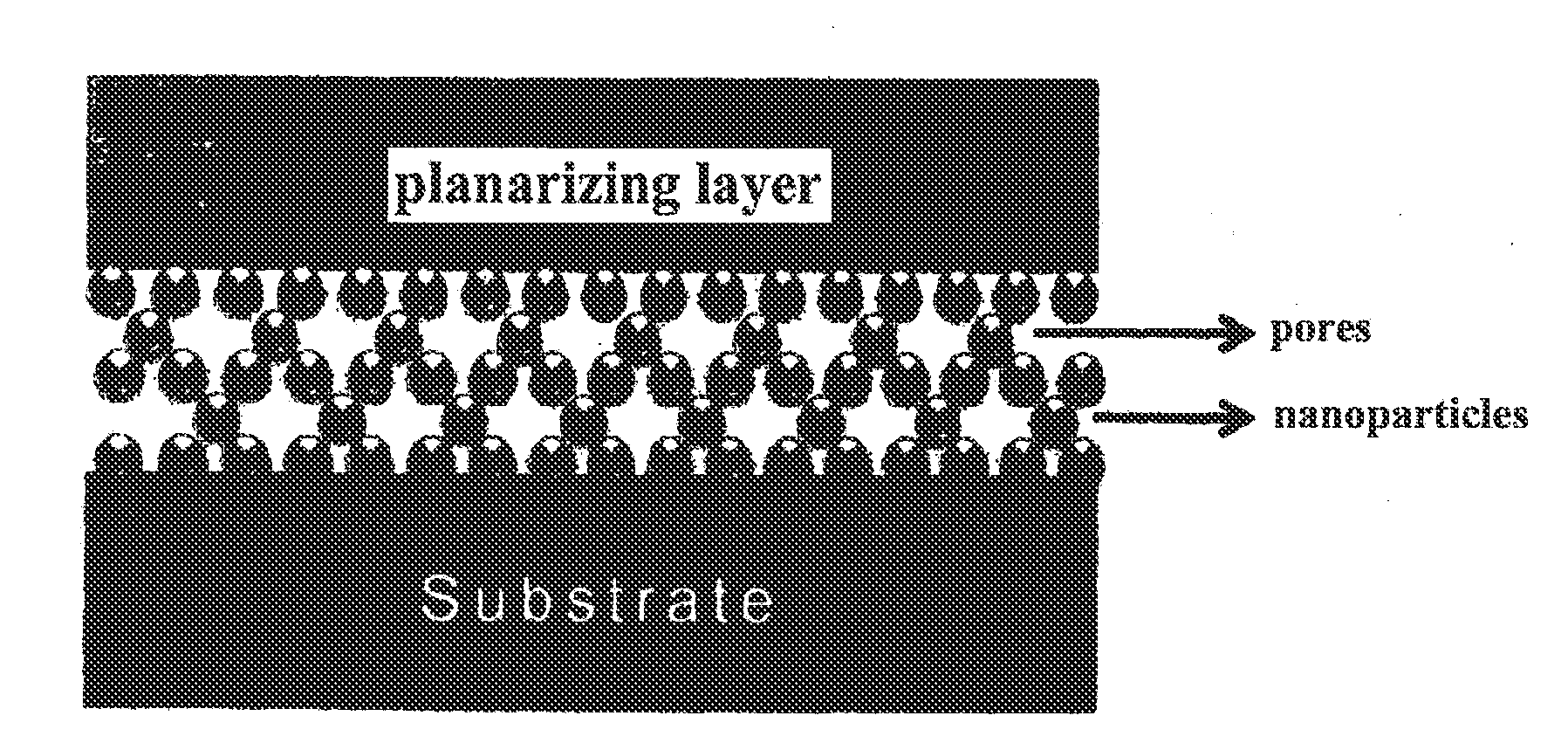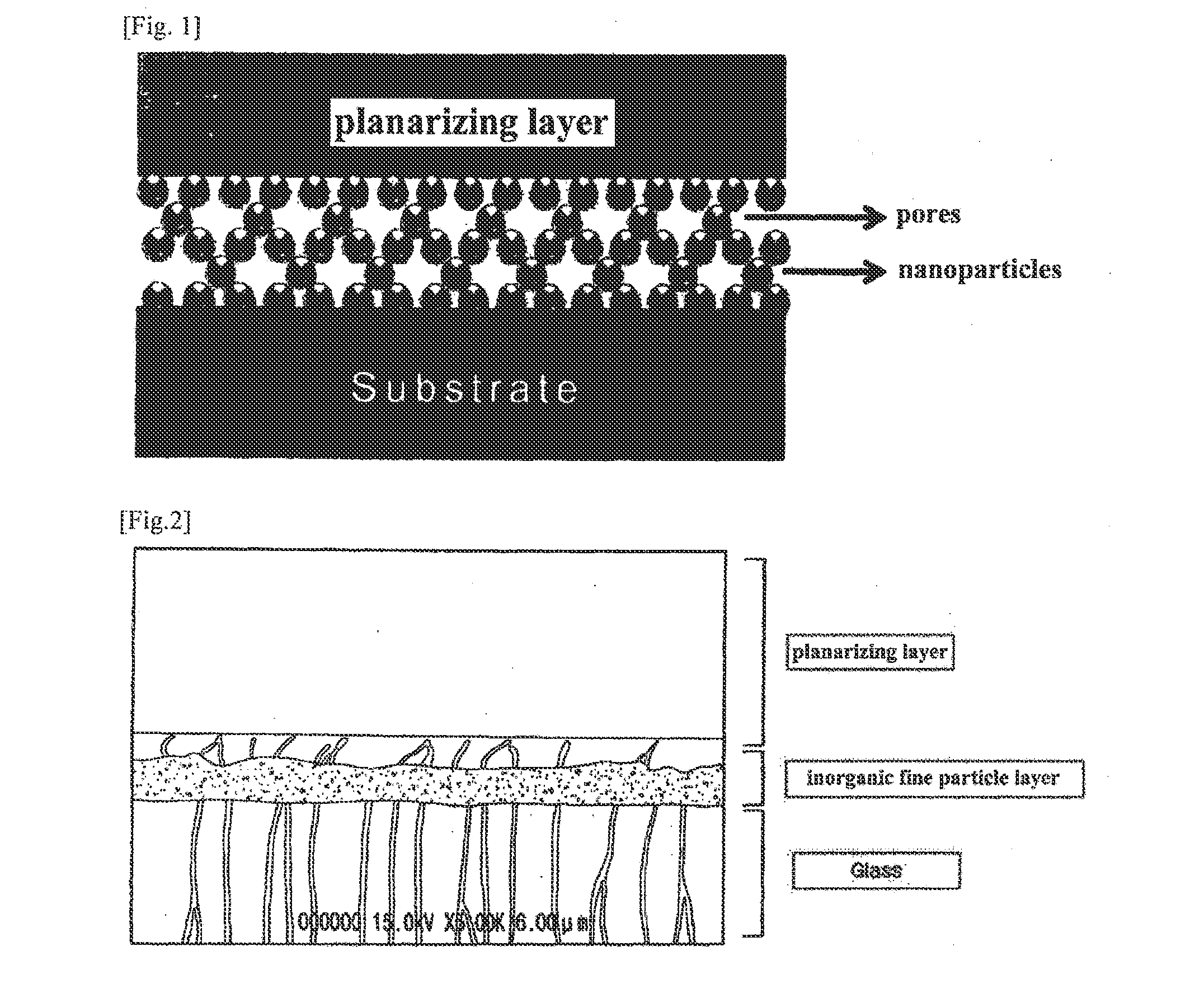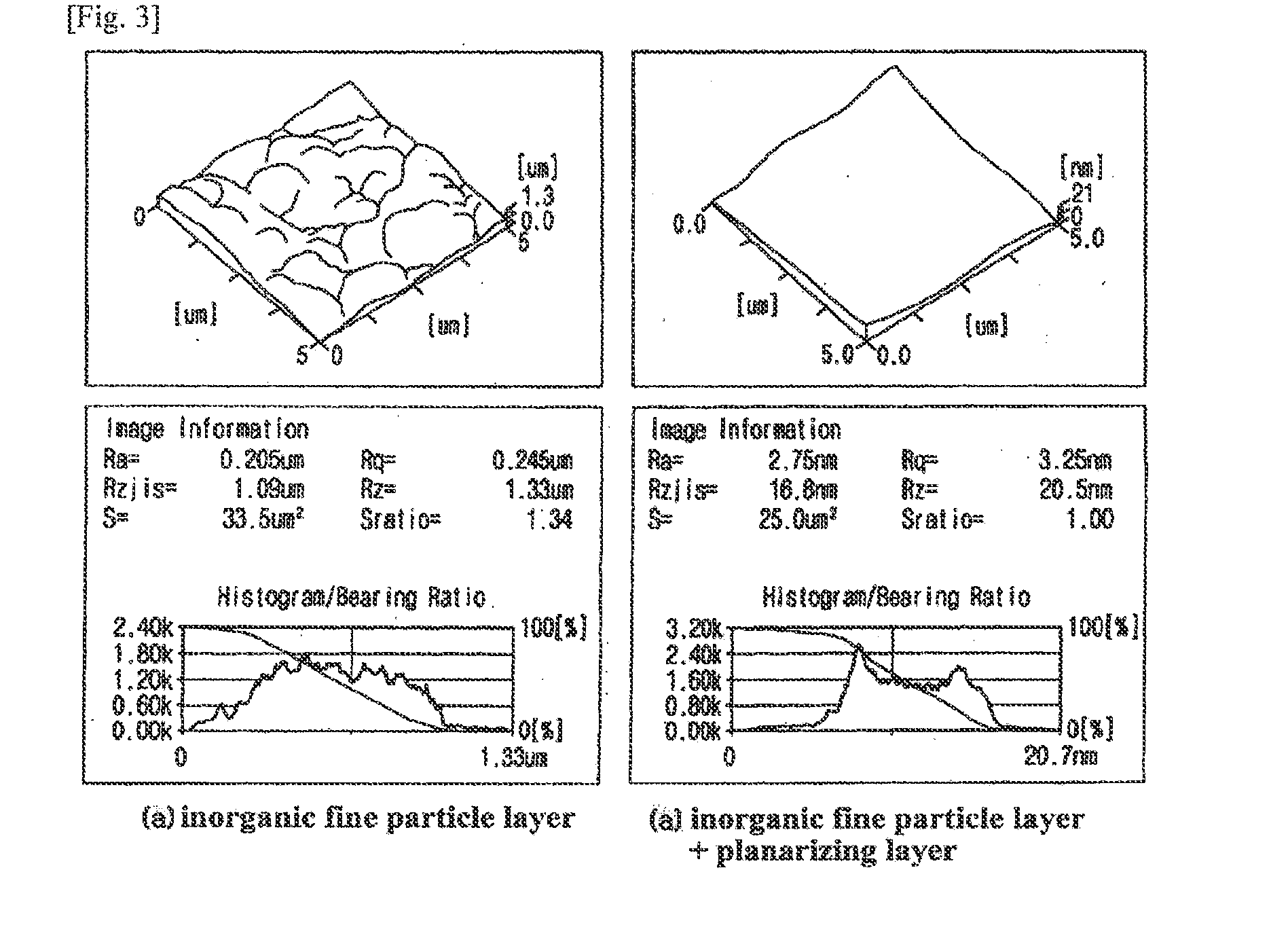Inorganic particle scattering film having a good light-extraction performance
a technology of organic particles and scattering films, which is applied in the direction of sustainable manufacturing/processing, instruments, and final product manufacturing, etc., can solve the problems of optical power reflection loss, limited application range, and harmful effect on the electric field of devices, etc., and achieve excellent light extraction effect, flatness and hardness.
- Summary
- Abstract
- Description
- Claims
- Application Information
AI Technical Summary
Benefits of technology
Problems solved by technology
Method used
Image
Examples
example 1-1
[0103]12.5 wt % of ZrOCl3.8H2O and 2 wt % of Y (NO3)3.6H2O were dissolved in water, and reacted with a mixture liquid of Ammonium hydroxide (NH4OH) to prepare a solution (precipitated at pH=9.00). After the prepared precipitated solution was reacted for 1 hour at room temperature, the reaction was completed. Precipitates and solution were separated through a filtering step, and the separated precipitates were dispersed in and washed with distilled water, and were dehydrated through a filter with pores of 1 μm, followed by repetitive washing. The dehydrated precipitates were dried in a dryer at 100° C. for 24 hours, and subjected to heat treatment in an electric furnace under an air atmosphere, at 800° C. for 1 hour.
[0104]The above described process is shown in FIG. 4. Also, on synthesized nano powder, the x-ray diffraction result and the scanning electron microscopic (SEM) photograph are shown in FIGS. 5 and 6, respectively.
example 1-2
[0105]12.5 wt % of ZrOCl3.8H2O and 2 wt % of Y(NO3)3.6H2O were dissolved in distilled water comprising additives, and reacted with a mixture liquid of Amonium hydroxide (NH4OH) to prepare a solution (precipitated at pH=9.00). After the prepared precipitated solution was reacted for 1 hour at room temperature, and then reacted at a reaction temperature raised up to 60° C. for 3 hours, the reaction was completed. From then, the same process as that in Example 1-1 was performed. On synthesized nano powder, the x-ray diffraction result and the scanning electron microscopic (SEM) photograph are shown in FIGS. 5 and 7, respectively.
example 1-3
[0106]This process was performed in the same manner as described in Example 1-2, except that additives are dropped to a zirconia aqueous solution and a yttria aqueous solution. After the resultant solution was reacted for 1 hour at room temperature, and then further reacted at a reaction temperature raised up to 60° C. for 3 hours. From then, the same process as that in Example 1-1 was performed. The particles obtained from this method had a smaller size than those in Example 1-2.
[0107]From the result, it can be seen that YSZ powder prepared in Example 1-1 showed a more developed crystallinity (see FIG. 5).
[0108]Through the transmission electron microscopic (TEM) photograph of YSZ particles prepared in Example 1-1, it was possible to confirm the shape and size of the particles. It was found that the particle size ranges 50 to 60 nm through the transmission electron microscopic photograph. The result is shown in FIG. 8.
PUM
| Property | Measurement | Unit |
|---|---|---|
| Thickness | aaaaa | aaaaa |
| Thickness | aaaaa | aaaaa |
| Nanoscale particle size | aaaaa | aaaaa |
Abstract
Description
Claims
Application Information
 Login to View More
Login to View More - R&D
- Intellectual Property
- Life Sciences
- Materials
- Tech Scout
- Unparalleled Data Quality
- Higher Quality Content
- 60% Fewer Hallucinations
Browse by: Latest US Patents, China's latest patents, Technical Efficacy Thesaurus, Application Domain, Technology Topic, Popular Technical Reports.
© 2025 PatSnap. All rights reserved.Legal|Privacy policy|Modern Slavery Act Transparency Statement|Sitemap|About US| Contact US: help@patsnap.com



